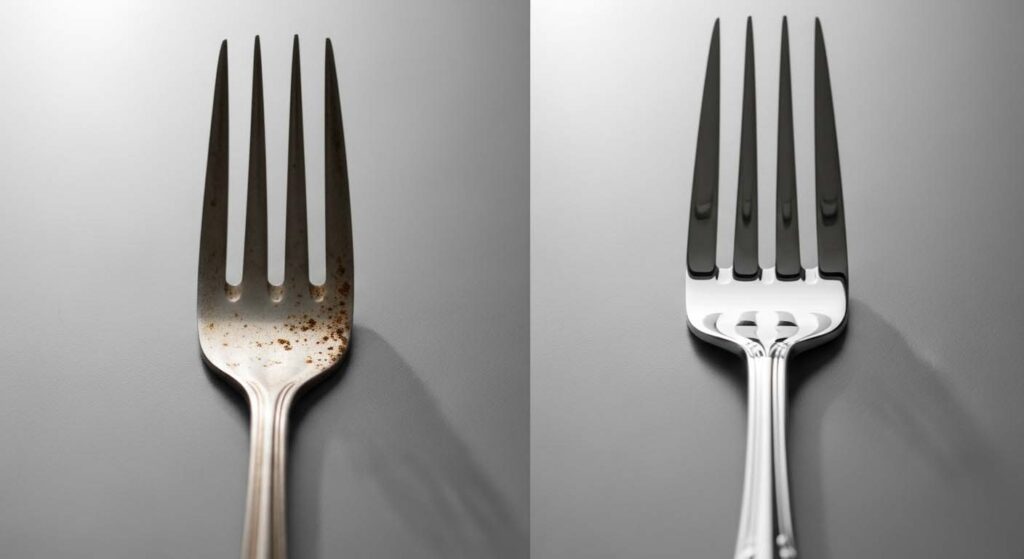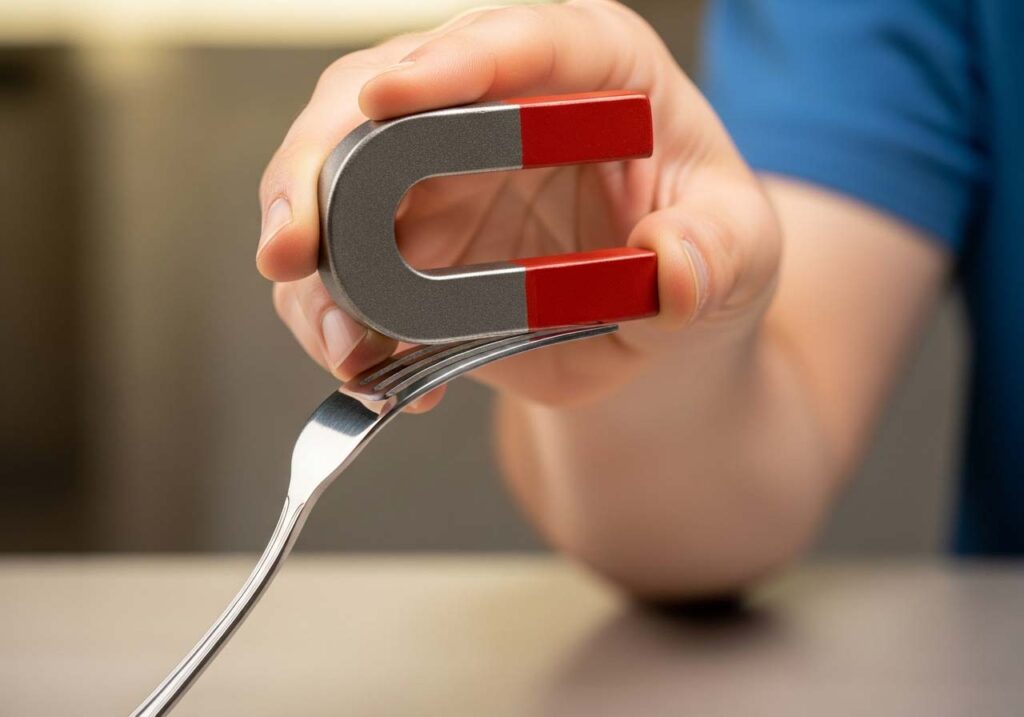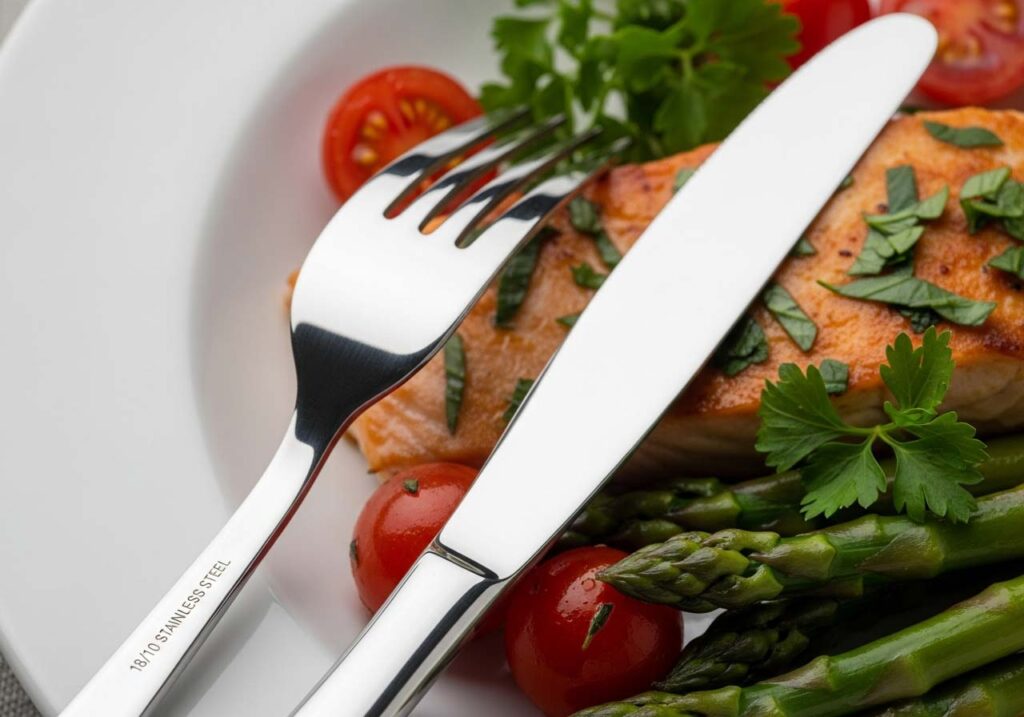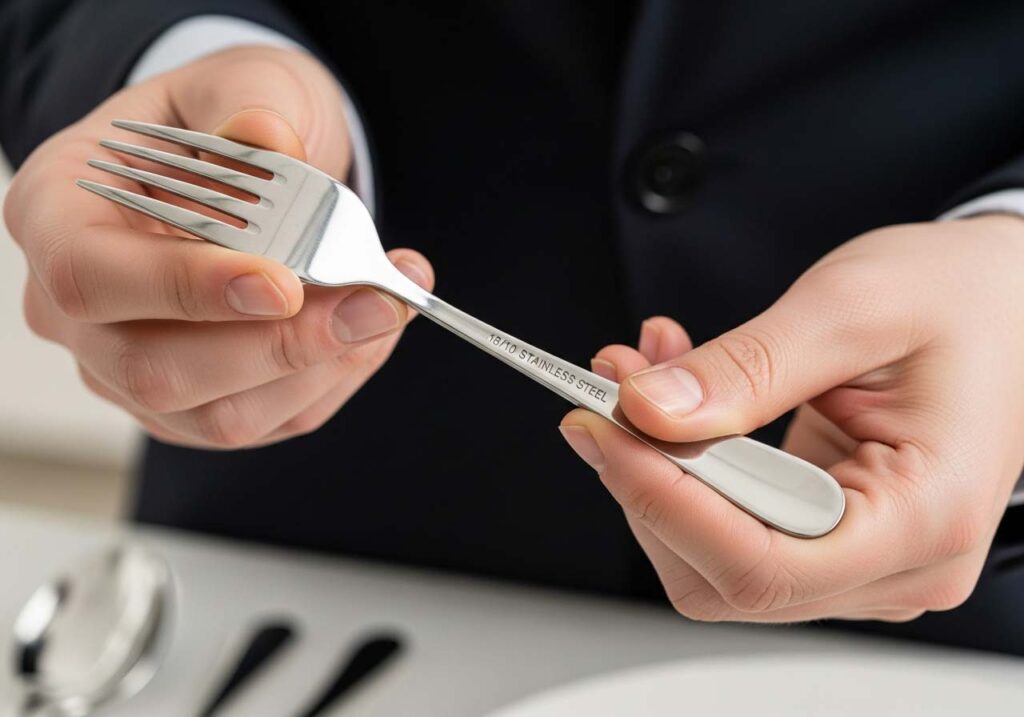What is the best grade of stainless steel cutlery?
Choosing new cutlery is tough with numbers like 18/10 and 18/0. Pick the wrong one, and you'll face rust and disappointment, wasting your money on frequent replacements.
The best grade for cutlery is 18/10 stainless steel. This grade contains 18% chromium for rust prevention and 10% nickel, which provides superior shine, durability, and extra protection against corrosion from food acids. It represents the highest quality and longest lifespan.

As someone who has manufactured cutlery for years, this is the most common question I get. My client Jacky, a seasoned buyer for a major US brand, doesn't just ask me for 18/10 steel; he asks for the material specification sheets to prove it. He knows that these numbers are not just a marketing gimmick. They are a chemical formula that determines how long the cutlery will last, how it will feel in a customer's hand, and how it will represent his brand. Understanding this difference is the first step any serious buyer should take. It separates a short-term purchase from a long-term investment.
What is better, 18/0 or 18/10 flatware?
You see 18/0 flatware sets that look good and cost much less. It's tempting to save money, but you suspect it will rust and bend, costing you more in the long run.
18/10 flatware is far superior to 18/0. The 10% nickel content in 18/10 provides excellent rust resistance, a brilliant luster, and durability. 18/0 contains no nickel, making it highly susceptible to rusting, staining, and bending, especially in a commercial environment.

The difference between 18/0 and 18/10 comes down to one crucial ingredient: nickel. Both types contain 18% chromium, which is what makes steel "stainless" by protecting it from rust. However, the nickel in 18/10 adds a powerful second layer of defense. It makes the steel much more resistant to corrosion from everyday acids found in food like vinegar, salt, and tomato sauce. It also gives the cutlery its bright, silvery shine and adds to its overall strength. An 18/0 fork might look fine out of the box, but after a few runs through a hot commercial dishwasher, you will start seeing rust spots and pitting. It’s a common and costly mistake. I once had a new cafe owner buy a cheap 18/0 set from another source to save on his startup budget. Six months later, he was calling me for a rush order of 18/10 because his entire stock was rusting.
| Feature | 18/10 Stainless Steel | 18/0 Stainless Steel |
|---|---|---|
| Composition | 18% Chromium, 10% Nickel | 18% Chromium, 0% Nickel |
| Rust Resistance | Excellent | Poor to Fair |
| Luster/Shine | Bright, Silvery | Duller, Grayish Tone |
| Durability | Very High | Lower (bends easily) |
| Best For | All Restaurants, Hotels | Low-end Cutlery, Knives |
Will a magnet stick to 18/10 stainless steel?
You've heard that real 18/10 stainless steel is non-magnetic. But when you test a sample with a magnet, it sticks a little, making you worry that you've been sold a fake.
A magnet might stick slightly to genuine 18/10 stainless steel. While the base material is non-magnetic, the manufacturing process of cutting, stamping, and bending the cutlery can create a weak magnetic response. A magnet test is not a reliable way to judge its quality.

This is one of the biggest myths in the cutlery business. As a factory owner, I can tell you exactly why this happens. In its pure, raw state, 18/101 (also known as austenitic steel) is indeed non-magnetic. However, cutlery isn't made from raw steel. We have to shape it. The immense pressure from stamping the fork tines or cold-forging the handle changes the molecular structure of the steel in those areas. This process, called cold working2, can create small amounts of magnetism. It does not mean the steel is low quality or lacks the correct amount of nickel. It is a normal side effect of production. Therefore, relying on a simple magnet test is a mistake. A strong magnet can easily pick up on this weak magnetic field, leading you to a false conclusion. The only true test is a chemical analysis.
Why 18/10 Steel Can Be Magnetic
| Cause | Explanation |
|---|---|
| Cold Working | Stamping, bending, and polishing can change the steel's crystal structure, creating a weak magnetic pull. |
| Component Fluctuation | Minor, acceptable variations in the chemical composition can slightly increase magnetic properties. |
| Welding Process | If a knife blade is welded to the handle, heat can cause tiny magnetic spots to form. |
Is 18-10 stainless steel safe?
With all the talk about materials, you worry if your cutlery is even safe to use. The thought of metals leaching into your customers' food is a serious concern for any business.
Yes, 18/10 stainless steel is one of the safest and most recommended materials for cutlery. It is extremely stable, non-reactive, and does not leach metals or metallic tastes into food, making it the global standard for food-grade steel.

Your concern for safety is completely valid, and it's why choosing the right material is so important. The term "food grade" means the material is stable and won't react with the food it touches. 18/10 stainless steel excels at this. The combination of chromium and nickel creates a very passive, non-porous surface. This protective layer prevents food acids from attacking the metal. It means the steel does not corrode, and no harmful substances or unwanted flavors are transferred to the food. This is why it is not only used for cutlery but also for high-quality cookware, surgical instruments, and food processing equipment. Cheaper metals or lower-grade steels lack this stability and can rust or corrode, which can affect the taste and safety of the food. By choosing 18/10, you are choosing a material trusted by health and safety authorities worldwide, including the FDA.
How can you tell if stainless steel is high quality?
Since the magnet test is unreliable, you need a better way to check quality. You must be sure you are getting the premium 18/10 steel you paid for, not a cheap substitute.
To verify quality, first look for the "18/10" stamp on the back of the piece. Then, evaluate its physical properties: it should feel heavy and balanced. The finish should be flawless. The ultimate proof is to request a formal material specification sheet from your supplier.

Having worked with professional buyers like Jacky for many years, I know they use a multi-step process to verify quality. You should do the same. First, a reputable manufacturer is proud of their material and will stamp "18/10" directly onto the cutlery. This is your first sign of quality. Second, use your hands. High-quality cutlery has good weight and feels balanced. It shouldn't feel flimsy or light. Inspect the finish closely under good light. Look for a uniform polish with no small pits, black spots, or rough edges. This shows care in manufacturing. Finally, for any large order, do what the pros do: ask for a material specification sheet. This is a lab report that details the exact chemical breakdown of the steel, confirming the percentages of chromium and nickel. It is the only way to be 100% certain. A trustworthy supplier will provide this without hesitation.
Conclusion
For the best performance, always choose 18/10 stainless steel cutlery. Verify its quality not with a magnet, but through its stamp, its physical feel, and by demanding proof from your supplier.
